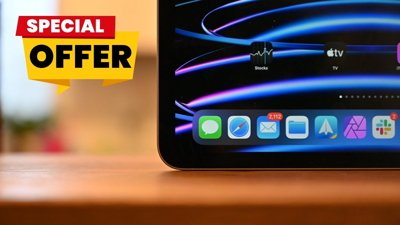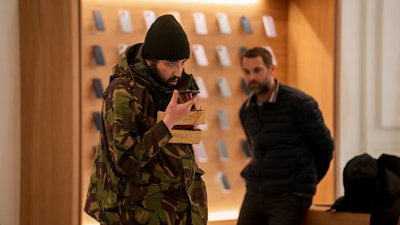Alongside adding USB-C charging to the AirPods Pro, Apple also updated them to provide lossless audio, and now explains exactly what was needed to achieve that.
To distinguish between the old and new charging cases for the AirPods Pro, you just have to look underneath at the USB-C port. But there's been another substantial change to AirPods Pro that is impossible to see.
Apple calls it lossless audio, and also says that it is required for the forthcoming Apple Vision Pro. As noted by AppleInsider, though, lossless audio in the AirPods Pro means 20 bits at 48 kilohertz with lower latency than now, which is less than Apple's previous lossless 24 bits at up to 192 kilohertz.
Now, Apple executives Ron Huang, vice president of Sensing and Connectivity, and Eric Treski, director of Product Marketing, have been speaking about the update. On Brian Tong's YouTube channel, they've revealed how what it took to get lossless working, and how it fits into the future of audio at Apple.
"To bring in lossless and ultra low latency audio to Vision Pro, many things have to work," said Huang. "[Shorter] latency lossless means bigger bandwidth. So you need a much more pristine wireless pipe to communicate between the two."
"And with the new AirPods Pro, we are able to run it at 5 gigahertz," he continued. "If you think back, Bluetooth typically runs at 2.4 gigahertz, which is quite a messy and noisy airspace."
"And so, Apple Vision Pro and AirPods Pro are now able to communicate at 5 gigahertz, in addition to H2, allowing us to build a new audio protocol," said Huang, "but it's also the cleaner airspace that allows us to to do that and USB-C AirPods are now 5-gig capable."
Huang also says that this increased Bluetooth bandwidth means auto-switching between, say, the iPhone and iPad "connects way faster and switches way faster than it used to before."
Eric Treski also spoke about the current advantages that the new AirPods Pro provides, and says it's the overall experience that Apple has been working toward.
"I would say that obviously making music and podcasts more listening to more enjoyable [is key]... also to what's in your surrounding environment and interacting with that in a more unique and beneficial way," said Treski. "And really just being this more and more continual companion throughout your day to actually just help you and be something that's truly important for you, which is great to see AirPods Pro doing that today."
The updated AirPods Pro cost $249, and went on sale in Apple Stores alongside the iPhone 15 today.
 William Gallagher
William Gallagher







-m.jpg)






 Christine McKee
Christine McKee
 Malcolm Owen
Malcolm Owen

 Charles Martin
Charles Martin


 Mike Wuerthele
Mike Wuerthele


-m.jpg)






22 Comments
20-bits? Where did that come from? I’d get 24-bits as that’s what most major artists release their lossless tracks in, but 20-bits? That’s a weird downscale. They’d be better off running with 16-bits. I could see them doing 24-bit/48Khz as most content is either 24/44.1 or 24/48. But nothing is 20/48. Is that a typo?
Probably a typo regarding the 20 bit.
For the wireless connection, Huang didn't specifically say they are running Bluetooth at 5 GHz. What he said was the H2 chip in the Vision Pro and the AirPods Pro USBC are able to communicate at 5 GHz. The rationale for 5 GHz is there are less devices using 5 GHz as compared to a 2.4 GHz, so it represented a cleaner connection. Ie, bandwidth is much more guaranteed.
Latency will be much more important for the Vision Pro than lossless, especially low latency that is spatially aware.
Also interesting that they are running a machine learning model on-device, in the AirPods Pros, for adaptive audio.
I’m still confused about why this was needed specifically for the Apple Vision Pro. As noted in the demo, there are speakers built right into the device that are meant to direct audio into the ear, featuring two drivers on each side — exactly so you don’t have to further block ambient sound by wearing earphones under the band that goes around your head.